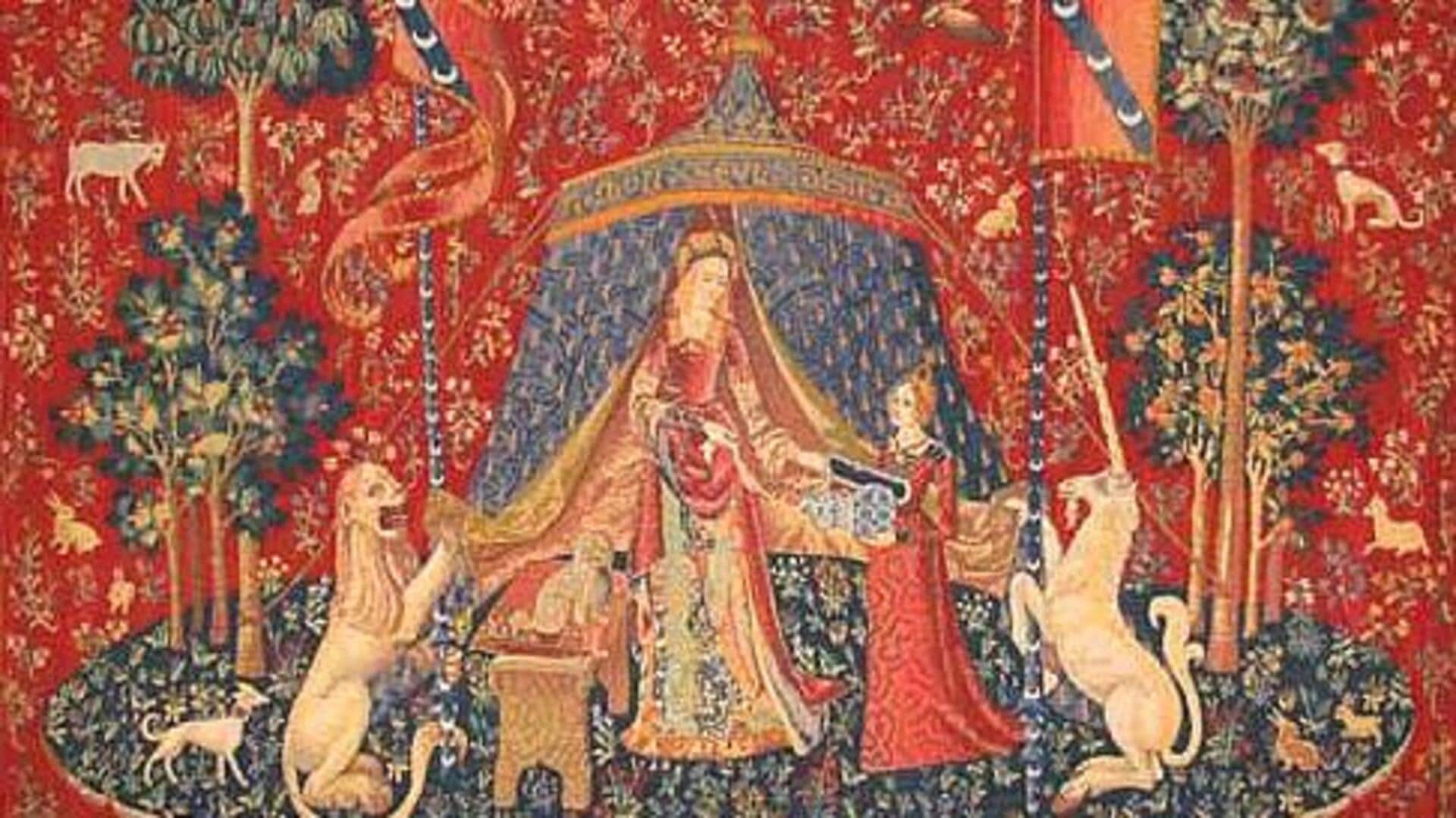
Explore the timeless techniques of tapestry art
What's the story
Tapestry art, a form of textile art, has been loved since centuries. The art includes weaving threads to create intricate designs and patterns. But the art isn't just about aesthetics; it's also about preserving history and culture. Tapestries have been adorning walls of castles and homes, telling stories through their detailed imagery. Knowing the techniques behind tapestry art can give you an insight into its enduring appeal and craftsmanship.
Weaving technique
Warp and weft: The basics
The base of tapestry art is the warp and weft technique. Warp threads are stretched on a loom, and weft threads are woven over and under them to create patterns. This technique enables flexibility in design, allowing artists to create simple geometric shapes as well as complex images. Mastering this technique is a must for any aspiring tapestry artist.
Color technique
Color blending with yarn
Color blending in tapestry is done by using different shades of yarns together. Artists often mix more than two strands to create gradients or subtle color transitions within the artwork. This technique requires an understanding of color theory so that the final piece has depth and vibrancy without harsh lines or abrupt changes.
Texture technique
Creating texture with materials
Texture is important to add dimension to tapestries. By using different thicknesses, or kinds of yarn, artists can add texture to their work. Some may even use materials like silk or metallic threads for effect, creating a contrast between smooth surfaces and rougher textures in the same piece.
Narrative technique
Storytelling through imagery
Like any other artwork, tapestries also tell a story. They showcase historical events or mythological tales through images. The artists imbue their designs with symbolism, conveying messages or themes subtly hidden in the details of the artwork. Knowing these symbols can make you appreciate not just the technical skill but also the story being told through every piece.